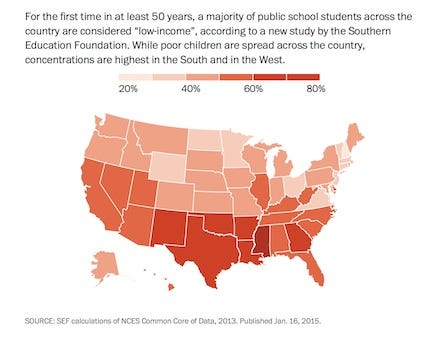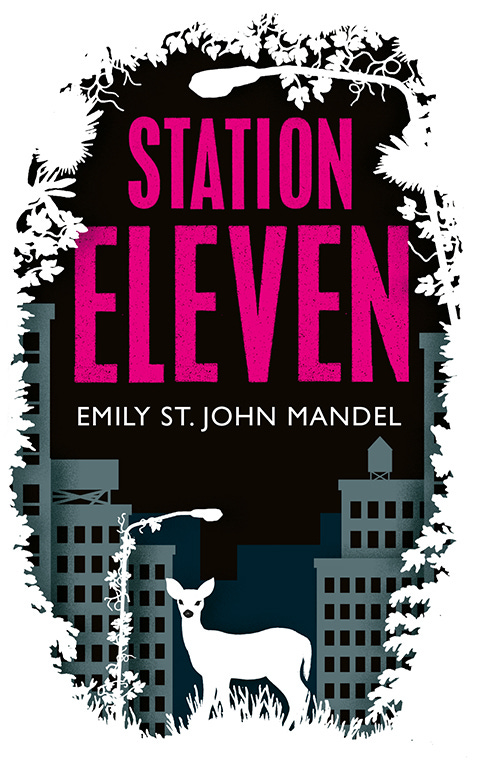So What, Who Cares (vol 2, issue 9) Why some people pay attention to who's paying for lunch
Hello! There were no major awards show events this past weekend and I am now unsure exactly how I'm supposed to ease into the work week if I'm not registering strong opinions on total strangers' attire. Please advise.
*

More than half of the children enrolled in the U.S.'s public schools qualify for free or reduced-price school lunches. As the Washington Post reported:
“We’ve all known this was the trend, that we would get to a majority, but it’s here sooner rather than later,” said Michael A. Rebell of the Campaign for Educational Equity at Teachers College at Columbia University ... “A lot of people at the top are doing much better, but the people at the bottom are not doing better at all. Those are the people who have the most children and send their children to public school.”
So what? This statistic is being used as a stand-in for approximating the nation's poverty rate, yet none of the coverage has explained how this squares against the U.S. Department of Education's National Center for Education Statistics, which puts the rate of child poverty in U.S. schools at 21% as of 2012. Their number is based on U.S. Census statistics.
But the upshot is this: The rising number of children whose families cannot afford to pack them a lunch every day suggests persistent economic insecurity among a significant percentage of Americans.
Who cares? People involved in the business of public education, because they're now dealing with children who are statistically less likely to have had enriching activities at home prior to school, and more likely to be dealing with food insecurity and other stressors that cognitively impair learning.
Schools are going to have to address how to help students feel safe, clean and fed before those kids can even think about sussing out the differences between subjects and verbs. They'll be doing so right as the U.S. Congress preps for a fight with the President in re: education funding for our youngest and our poorest Americans, and the items which will be up for debate include school lunch funding (more on this in vol 1, issue 10; vol 1, issue 51).
*

We all have a new hero to aspire to: 90-year-old IDEO designer Barbara Beskind, who is busy working with a Japanese company on the replacement for bifocals. When we're all wearing glasses that switch between nearsighted and farsighted lenses with a wave of the hand, we can thank Beskind. She's the one who pointed out that arthritic fingers are not going to want to fiddle with anything tiny and specific.
So what? Good design requires knowing how people will use your product and what limits the user may have. Beskind's employment was a move by IDEO to bring in qualified talent that had first-hand experience with the needs of different markets.
Who cares? Anyone who wants to make money off baby boomers -- the market for elegant, functional designs that take aging into account is only going to grow as affluent baby boomers continue to age. They key word here is affluent, since poor men and women can expect to die 11-13 years sooner than their better-educated, higher-earning counterparts.
*

This just in: Listicles were not, in fact, willed into existence by a Buzzfeed editor who had grown tired of rounding up cat GIFs. They were the bread and butter of newspapers through the 19th century, and they shaped the public perception of newspapers as authoritative media because they offered readers "a kind of serialized and communally authored compendium of useful knowledge."
So what? Listicles are actually a really efficient way to convey information. As Maria Konnikova wrote in the New Yorker:
When we process information, we do so spatially. ... Because we can process information more easily when it’s in a list than when it’s clustered and undifferentiated, like in standard paragraphs, a list feels more intuitive. In other words, lists simply feel better.
Who cares? If you are the type of person who is tired of hearing people speak derisively about the listicle, you can now smack people down with history.
Or you can score culture points by sniffing that Harper's Index is basically a listicle and nobody gets shirty about that. Or that Mental Floss has been dining out on the "collections of facts" editorials for ages, and nobody cared because it was in print. Or that in the 1990s, Pamela Redmond Satran made a career by writing lists for back-page sections of women's magazines and they didn't even have facts in them.
So if you love listicles, this is good news. If not, um. Sorry?
(I am also sorry I did not write this blurb in listicle format.)
*

Your pop culture moment of the day: The Incomparable Book Club meets to talk about Emily St. John Mandel's Station Eleven: A Novel and William Gibson's The Peripheral on Tuesday, January 20.
(Please also enjoy this blog entry from Nathan Burton, who designed the Station Eleven book cover and part of a comic that's integral to the story. He writes about the design process.)
We will probably also end up detouring into John Varley's Slow Apocalypse^, which I happened to read right as I was finishing the other two, and which helped inform my opinions on Station Eleven, The Peripheral, and the state of apocalypse fiction in general.
Hit me on via email or Twitter with questions or observations about either, and you can follow along on the live broadcast here at 8 p.m. PST.
^ I have a fairly tortured relationship with Varley's later work, and Slow Apocalypse is both a ripping good read and a tremendously frustrating one if you came up on the author's Gaia trilogy or his outstanding body of short stories ("Press Enter" and "Tango Charlie and Foxtrot Romeo" are phenomenal).
If you want to understand the mindset that drives Slow Apocalypse, just read this Economist article on preppers and think about how cleverly the movement rebranded itself from the much more scary-sounding "survivalists." Then enjoy the romp.
*
Did you miss an issue of So What, Who Cares? The archive is here. Are there typos? I apologize in advance.
As always, I welcome your feedback and suggestions via email or Twitter. Always let me know what you think about So What, Who Cares? If you really like it, tell a friend to subscribe.

